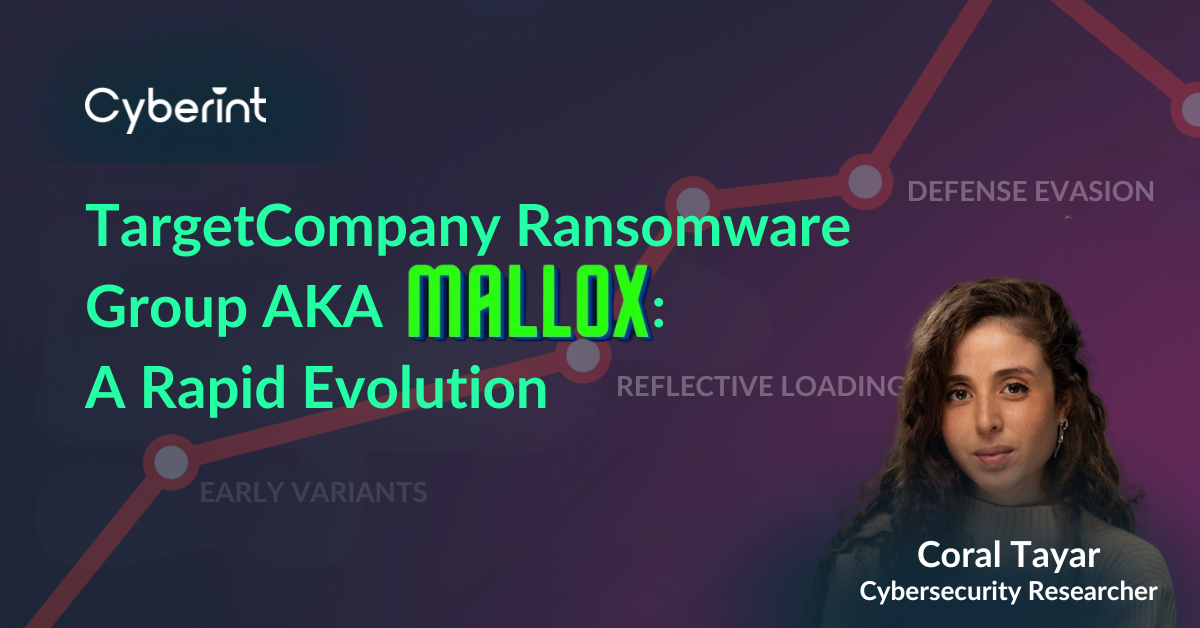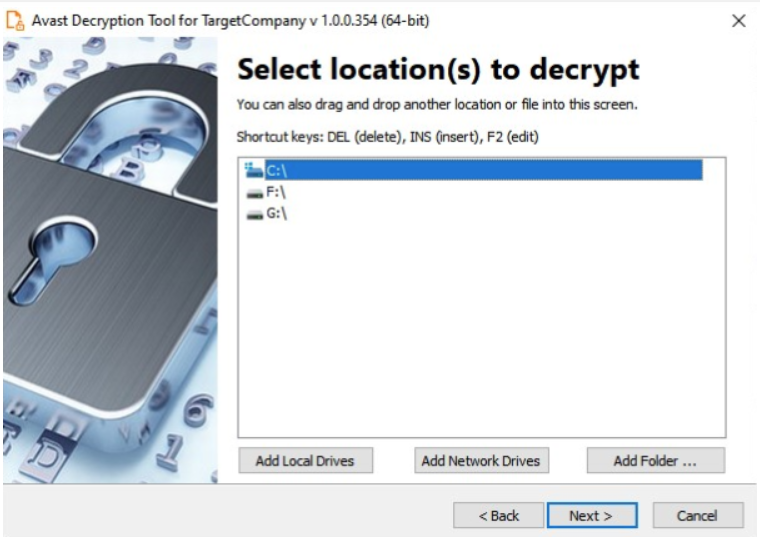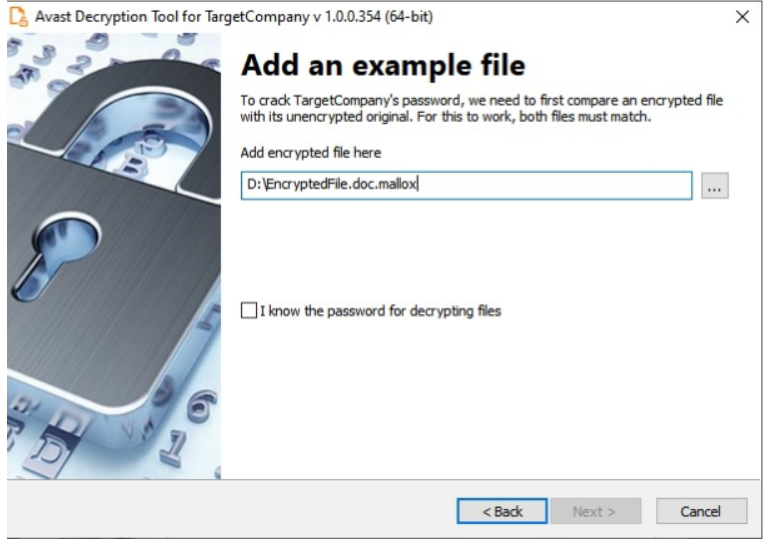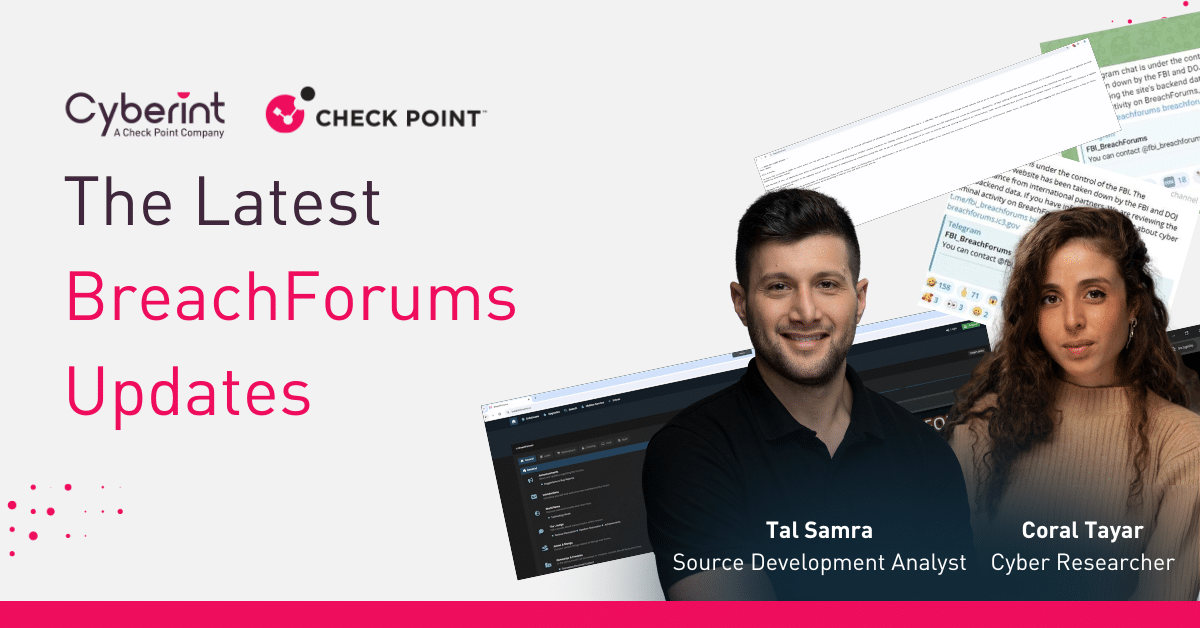


The TargetCompany ransomware group, first identified in June 2021, garnered its name due to its distinctive practice of appending the names of the targeted organizations to encrypted files. Over time, the group has exhibited a dynamic evolution, frequently changing encryption algorithms, decryptor characteristics, and file name extensions.
Early iterations of TargetCompany were characterized by a “.onion” contact site for negotiation and the delivery of ransom notes titled “How to decrypt files.txt.” In contrast, the group’s more recent variants have abandoned this nomenclature. Notably, during the mid- to late-2022 period, TargetCompany adopted the extension “.mallox” for its encrypted files. The group’s encryption methodology advanced, incorporating Chacha20, Curve 25519, and AES-128 algorithms.
Moreover, TargetCompany expanded its activities by establishing a data leak site known as “Mallox” and altering its ransom notes to “HOW TO RECOVER!!.txt.”
Malicious activity by TargetCompany targeting vulnerable SQL servers has surged 174% compared to 2022 reports PaloAlto and shows no sign of slowing down. However it’s important to note, that this figure is in line with the general surge in ransomware attacks in 2023.
The TargetCompany ransomware group’s evolution, affiliations, and modus operandi reveal a threat actor that continuously adapts and expands its operations, posing significant challenges to organizations and cybersecurity professionals. Understanding the group’s tactics and affiliations is crucial for developing effective mitigation and response strategies to counter their threats.


In 2022 Avast released a decryption tool to decrypt data encrypted by TargetCompany Ransomware, but it is a resource intensive process.
TargetCompany primarily focuses its attacks on vulnerable database servers. The group employs a technique known as reflective loading, which involves connecting to a specific IP address to download its malicious payload. However, the content hosted at this IP address typically remains accessible for only a brief period, often around 24 hours, complicating efforts by security analysts to conduct dynamic analysis.
Notably, in October 2022, a unique TargetCompany infection case came to light, featuring a distinct infection chain. This new approach involved the deployment of %mytemp%\K5ZPT7WD.exe, a malicious loader employing reflective loading. This loader connected to hxxp://80[.]66[.]75[.]25/pl-Thjct_Rfxmtgam[.]bmp to drop the Remcos backdoor payload.
The TargetCompany ransomware group has exhibited a diverse geographic and sectoral focus including:
In terms of sectors, the group has demonstrated interest in organizations operating in the following industries:
The TargetCompany ransomware group employs a range of malware and tools throughout its operations, which have evolved over time:
The TargetCompany ransomware group’s operations are characterized by a set of tactics, techniques, and procedures (TTPs) that illustrate their modus operandi:
The TargetCompany ransomware group comprises members who previously operated within other ransomware groups. They parted ways with their former associates due to constraints and limitations that impeded their profit-making capabilities. These members now form the core of the TargetCompany group.
While TargetCompany maintains a relatively small, closed-knit structure, there is evidence of the group expanding its operations. For example, a new member known as “Mallx” was observed actively recruiting affiliates for the Mallox ransomware-as-a-service (RaaS) program on the cybercrime forum known as RAMP.
Furthermore, there are indications of potential affiliations between TargetCompany and other threat actor groups. Notable observations during monitoring revealed an attack sharing similarities with TargetCompany, which included the downloading of a PowerShell script from a C&C server linked to the BlueSky ransomware group. This suggests a potential nexus between these groups.
The TargetCompany ransomware group maintains a presence within the broader cybercriminal community, particularly through affiliations with the RAMP forum. The recruitment of affiliates for the Mallox RaaS program underscores the group’s involvement in the wider cybercrime ecosystem.
TargetCompany exhibits similarities with other threat actors, particularly those engaged in brute-force attacks against Microsoft SQL (MS SQL) Servers. Notably, the BruteSQL ransomware group shares commonalities with TargetCompany. These include the presence of highly skilled Russian-speaking members, advanced infiltration methods, and the utilization of tools such as Cobalt Strike and AnyDesk remote control through regasm.exe. The presence of the Anydesk.msi file in TargetCompany’s open directory further suggests links with these threat actors.
| Tactic | Technique |
|---|---|
| Initial Access | Discovery T1016.001 – Internet Connection Discovery |
| Persistence | T1547.009 – Shortcut Modification |
| Privilege Escalation | T1547.009 – Shortcut Modification |
| Credential Access | T1003.001 – LSASS Memory |
| Impact | T1489 – Service Stop |
| Execution | T1059.003 – Windows Command Shell |
| Defense Evasion | T1027.001 – Binary Padding |
| Exfiltration | T1537 – Transfer Data to Cloud Account |
| Credential Access | T1003.008 – /etc/passwd and /etc/shadow |
| Exfiltration | T1020 – Automated Exfiltration |
| Exfiltration | T1029 – Scheduled Transfer |
| Impact | T1486 – Data Encrypted for Impact |
| Initial Access | T1566.002 – Spearphishing Link |
| Defense Evasion | T1112 – Modify Registry |
| Impact | T1490 – Inhibit System Recovery |
| Initial Access | T1190 – Exploit Public-Facing Application |
| Execution | T1569.002 – Service Execution |
| Discovery | T1082 – System Information Discovery |
| Defense Evasion | T1222.001 – Windows File and Directory Permissions Modification |
| Lateral Movement | T1570 – Lateral Tool Transfer |
| Command and Control | T1071.001 – Web Protocols |
| Defense Evasion | T1036.005 – Match Legitimate Name or Location |
| Defense Evasion | T1070.004 – File Deletion |
| Persistence | T1547.001 – Registry Run Keys / Startup Folder |
| Privilege Escalation | T1547.001 – Registry Run Keys / Startup Folder |
| Persistence | T1078 – Valid Accounts |
| Defense Evasion | T1078 – Valid Accounts |
| Privilege Escalation | T1078 – Valid Accounts |
| Initial Access | T1078 – Valid Accounts |
| Credential Access | T1110 – Brute Force |
| Discovery | T1012 – Query Registry |
| Execution | T1059.001 – PowerShell |
| Discovery | T1049 – System Network Connections Discovery |
| Defense Evasion | T1620 – Reflective Code Loading |
| Exfiltration | T1041 – Exfiltration Over C2 Channel |
| Initial Access | T1195 – Supply Chain Compromise |
| Initial Access | T1566.001 – Spearphishing Attachment |
| Exfiltration | T1567 – Exfiltration Over Web Service |
| Collection | T1114.001 – Local Email Collection |
| Defense Evasion | T1562.001 – Disable or Modify Tools |

Fill in your business email to start.
Fill in your business email to start


